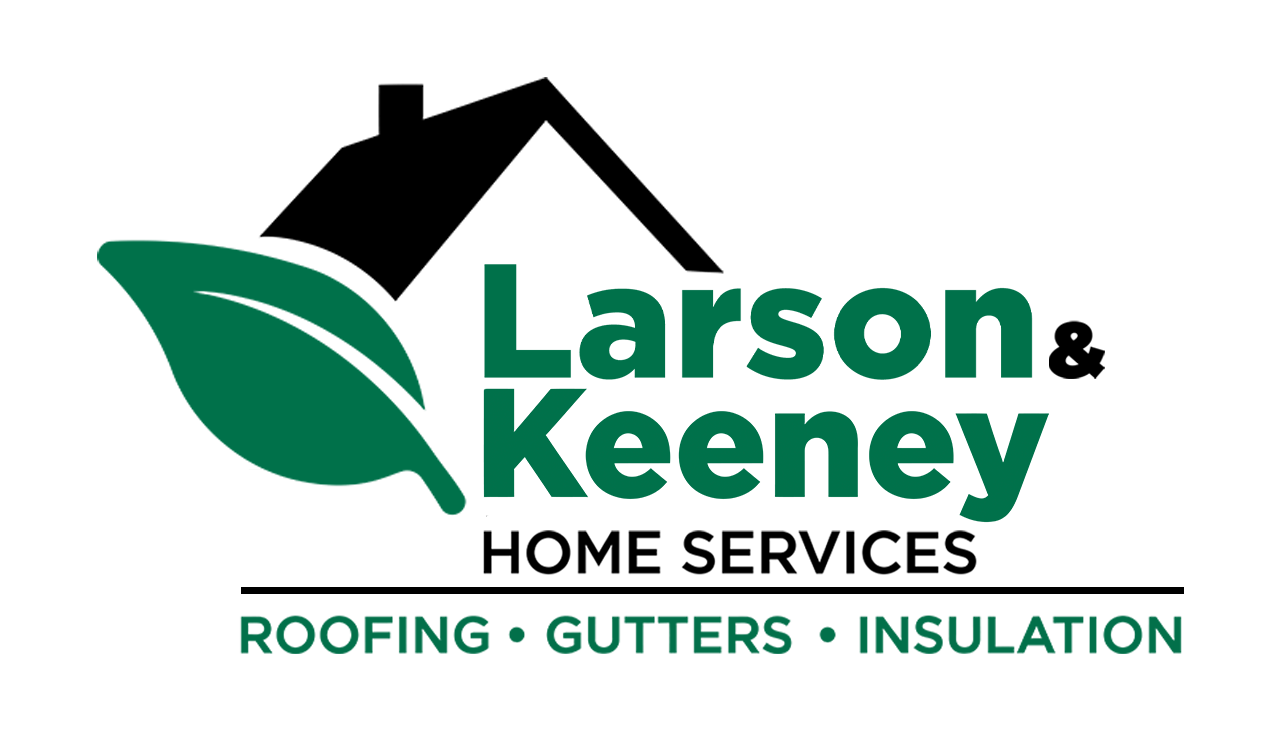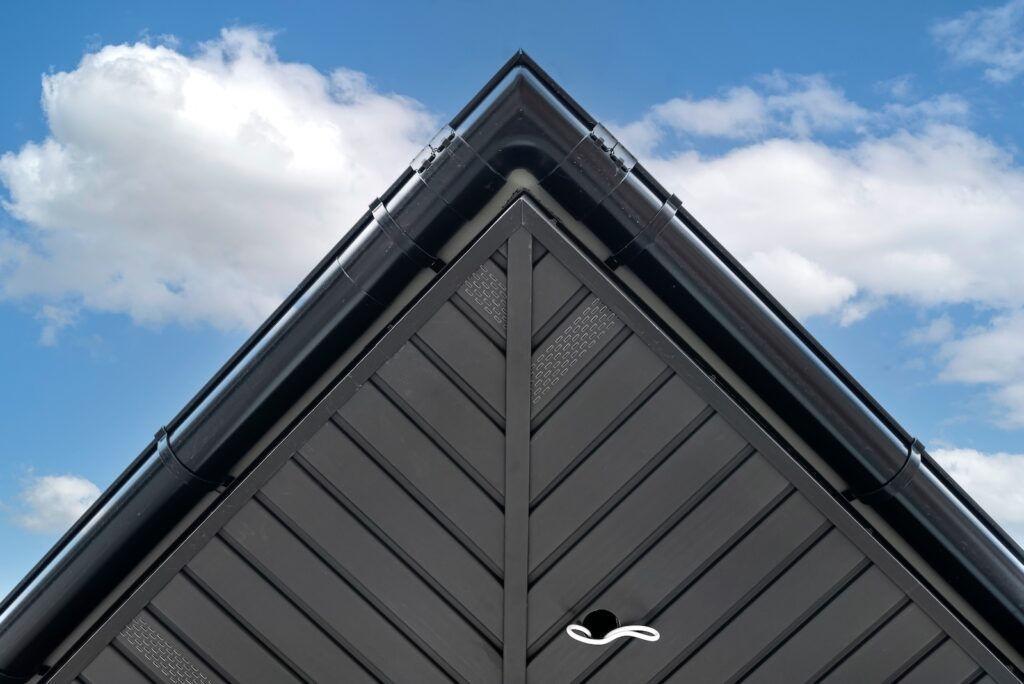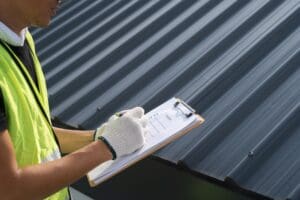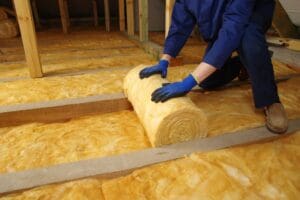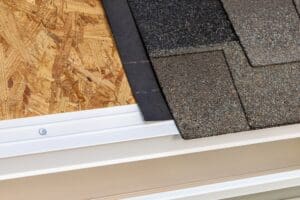Deciding between a gable vs. a hip roof for your home? These two styles are the most common in American residential roofing, and each brings its own advantages in terms of performance, appearance, and cost.
Whether you’re building new or replacing an old roof, your choice can have a big impact on your home’s energy efficiency, structural strength, and long-term value.
At Larson & Keeney Home Services, we’re here to help you make the best decision for a durable, high-performing roof. In this guide, we’ll break down the key differences between gable and hip roofs, explore their pros and cons, consider how climate plays a role, and help you align your choice with your design goals and budget.
What’s a Gable Roof?
A gable roof is one of the most popular roof shapes for North American homes. It’s a classic pitched roof with two sloping sides that meet at the top, forming a triangle at each end of the house.
Gable roofs are popular because they’re simple to build, budget-friendly, and excellent at shedding water and snow, making them a great choice in colder or wetter climates. That steep slope helps keep rain and snow from collecting on your roof, which can help prevent leaks and structural damage.
Gable roofs come in a few style variations, such as:
- Cross-gabled roofs – where two gables intersect at different angles.
- Dutch gables – which mix hip and gable elements for added flair.
- Front gables – often found in Cape Cod and Colonial-style homes.
Besides their practicality, gable roofs also have a timeless charm that works well with many traditional home designs. They strike a great balance between form and function, which is why so many homeowners choose them.
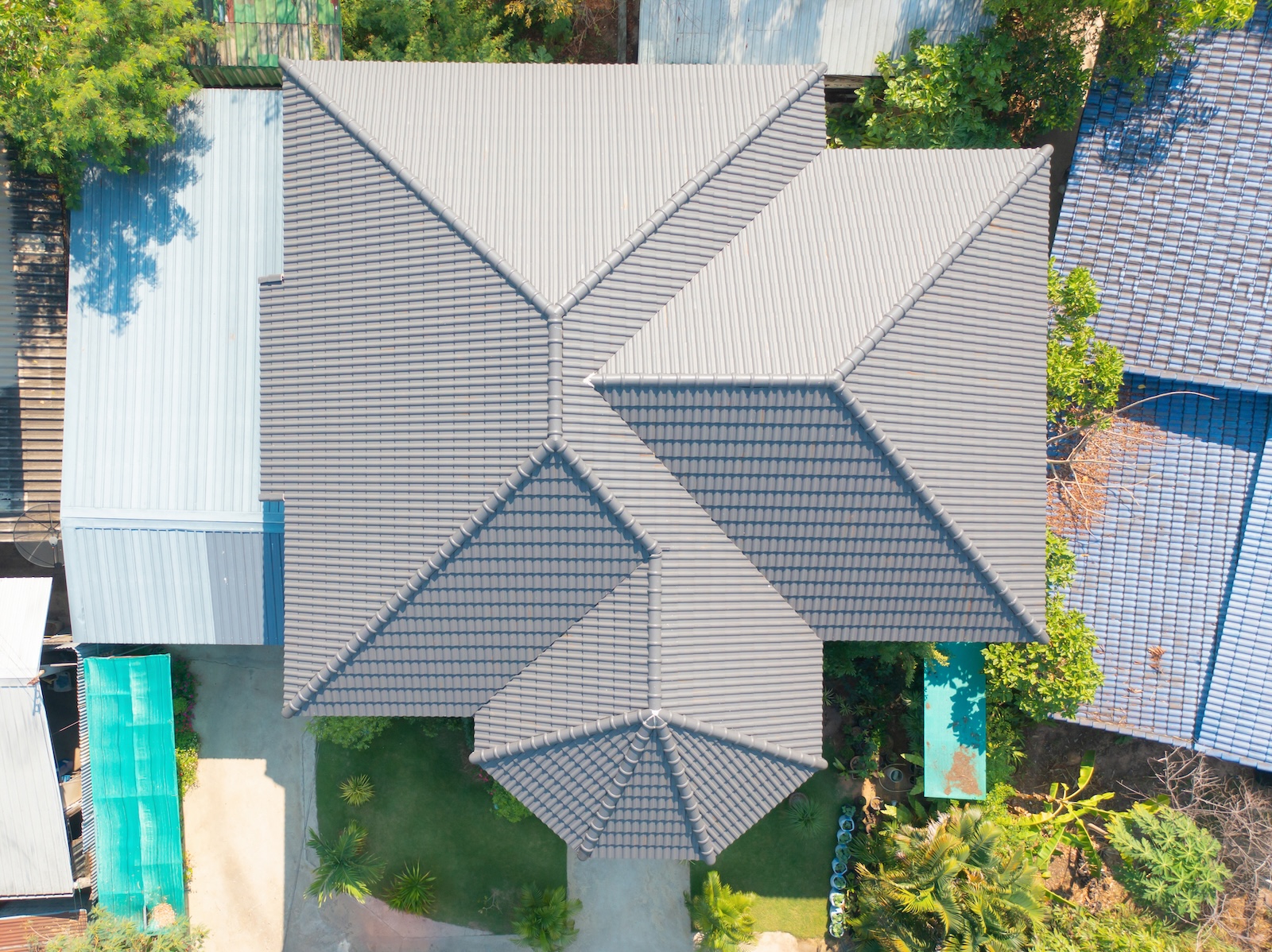
What Is a Hip Roof?
A hip roof, by contrast, slopes downward on all four sides. These sides typically meet at a ridge or a single peak, forming a compact, low-profile shape that’s excellent for high-wind and hurricane-prone areas.
Hip roofs are known for their superior structural integrity and are often considered more stable than gable roofs.
You’ll find hip roofs commonly used in southern and coastal states, where wind resistance is a top priority. Their enclosed design makes them less vulnerable to wind uplift and water intrusion.
Hip roof styles include:
- Pyramid hips, which come to a single point (ideal for square layouts).
- Half-hip roofs, which include a shortened gable.
- Hip-and-valley systems, often used in complex, multi-wing home layouts.
Although they typically cost more to build due to the additional framing and materials required, hip roofs offer an elegant, balanced appearance that works well across various architectural styles.
Key Differences Between Gable and Hip Roofs
To help you navigate the gable vs. hip roof decision, it’s essential to understand their fundamental differences in structure, function, and design.
Roof Shape and Slope
Gable roofs feature a bold, triangular shape with two sloping planes, offering maximum attic space and ventilation. Their steep pitch is ideal for regions with heavy precipitation.
Hip roofs have a more uniform shape, characterized by four downward slopes. This configuration is excellent for resisting wind uplift while reducing attic space.
Given their steep slope, gable roofs are ideal for open interior spaces and effective drainage. The uniform shape of hip roofs provides better all-around protection in storm-ridden climates.
Framing and Construction Complexity
When it comes to construction, gable roofs are known for their relatively simple design, which allows for quicker installation and lower costs. Typically, it just takes two main rafters and a ridge board to frame one, making them a favorite among contractors and homeowners who are watching their budget.
Hip roofs, on the other hand, are a bit more involved. Framing requires a more intricate system of rafters or trusses that meet at hips and ridges. Due to this added complexity, they require more time, materials, and skill to build, which naturally increases the price.
If you’re looking for a simpler, more budget-friendly build, gable roofs tend to be more cost-effective. Hip roofs demand more skill and investment but offer enhanced durability.
Attic and Interior Space
One major advantage of gable roofs is the generous attic space they provide. The triangular shape naturally creates space under the roof, which can be utilized for storage or even converted into a living area.
In contrast, the sloped design of hip roofs limits available attic height and space. The interior headroom under a hip roof is typically smaller.
If maximizing usable attic space is a priority in deciding between a gable vs. a hip roof, a gable roof will be the right choice.
Wind and Weather Resistance
Hip roofs are often more durable against high winds, as the sloped sides on all four walls allow wind to pass over the roof more easily, reducing the risk of structural damage. This makes hip roofs especially popular in hurricane zones and coastal areas.
Gable roofs, while great for rain and snow runoff, are more prone to damage in high-wind environments. The open ends can catch wind easily, potentially leading to uplift or collapse if not properly reinforced.
Therefore, hip roofs are best for homeowners in areas with frequent storms or hurricanes, as they provide superior wind protection.
Cost
Cost is a significant factor in the debate over gable vs. hip roofs. You want a roof that not only looks good and performs well but also fits your budget.
Gable roofs typically win in terms of affordability, both in labor and materials. Their simple design makes them easier to install, with shorter build timelines and fewer expenses.
Hip roofs are more expensive to frame, sheath, and finish. More materials are needed, and more time is required for installation. However, the long-term benefits, such as enhanced structural strength and weather resistance, can offset the initial cost in some cases.
Aesthetic Appeal
Your roof should complement your home’s style as much as it protects it. When it comes to visual appeal, the choice between a gable vs. a hip roof often depends on your style and the overall design of your home.
Gable roofs offer a classic, symmetrical appearance that complements traditional designs, such as colonial, craftsman, and farmhouse styles.
Hip roofs offer a more refined, seamless look, especially on modern or Mediterranean-style homes. Their balanced appearance can enhance the structure’s silhouette and complement high-end finishes.
Pros and Cons of a Gable Roof
Gable roofs offer numerous benefits; they’re stylish, efficient, and excel at withstanding the elements. But like any design choice, they also have a few downsides to consider. Understanding both the strengths and limitations of a gable roof can help you decide if it’s the right fit for your home.
Here’s a quick look at the main pros and cons:
| Gable Roof Pros | Gable Roof Cons |
|---|---|
|
Easy to build and affordable
|
Can suffer wind damage |
| Strong attic ventilation | Less stable without proper bracing |
| Great for steep pitches | Limited visual variety in some styles |
Pros and Cons of a Hip Roof
Hip roofs offer several advantages, especially when it comes to durability, wind resistance, and a clean, modern look. However, they also come with a few trade-offs worth considering.
Here’s a breakdown of the key pros and cons of hip roofs for your home:
| Hip Roof Pros | Hip Roof Cons |
|---|---|
|
Superior wind protection
|
Higher construction costs |
| Visually balanced and refined | Less usable attic space |
| Better structural integrity | Complex ventilation requirements |
Regional Suitability: Which Roof Performs Best In Different Climates?
Your roof is your home’s first defense against the elements, but not every roof style performs equally in all climates. Depending on where you live, one option may offer better protection and long-term value than the other.
Here’s how gable roofs vs. hip roofs meet the demands of different weather conditions and regions:
Northern U.S. and Snow-Heavy Regions
In cold climates where snow accumulation is a concern, gable roofs are a better choice. Their steep pitch encourages snow to slide off before it can build up, reducing stress on the roof structure. Gables also make it easier to incorporate attic ventilation, which helps prevent ice dams from forming.
Southern U.S. and Hurricane-Prone Areas
For homes in areas prone to hurricanes or strong storms, hip roofs provide superior wind resistance. Their four-sided design deflects wind from all directions, making them less susceptible to wind uplift or storm damage.
Arid or Desert Climates
In hot and dry regions, both roof shapes perform well. However, hip roofs offer better shading from the sun due to their lower profile, which helps reduce heat gain. However, with proper ventilation and insulation, gable roofs also perform adequately.
Roofing Material Options for Hip and Gable Roofs
Not all roofing materials are equally well-suited for every roof shape. Hip and gable roofs each have their own structural strengths, which can make certain materials a better fit than others.
Here are the most popular shingle roofing options and how well they pair with these two common roof styles.
Asphalt Shingles
Asphalt shingles are the most common roofing material and work well for both hip and gable roofs. Their lightweight design makes them easy to install and cost-effective, especially for gable roofs, which require less surface coverage due to fewer slopes.
Tile and Slate
Heavier materials, such as tile and slate, are better suited for hip roofs due to their evenly distributed weight and robust framing. Hip roofs are more structurally capable of supporting these heavier loads, especially in low-slope designs.
Metal Roofing
Metal roofing works for both gable and hip roofs, offering excellent durability and energy efficiency. On steep gable roofs, metal enhances water runoff. On hip roofs, it adds wind resistance and storm durability.
Which Roof Style Is Better for Energy Efficiency?
Both hip and gable roofs can offer energy-efficient benefits. According to the U.S. Department of Energy, proper ventilation and insulation are key factors in managing energy use, regardless of roof shape.
Gable roofs generally allow for better natural airflow thanks to their open, triangular design. This can help regulate attic temperatures and reduce cooling costs. However, in windy areas, they may need extra insulation or structural support.
Hip roofs, on the other hand, offer more consistent insulation and are great for retaining heat in colder climates. They don’t ventilate as easily on their own, so well-planned venting is important to avoid heat buildup or moisture issues.
If you’re considering solar panel installation, gable roofs usually provide more usable space and better sun exposure. Hip roofs can still support solar panels, but may have less ideal angles and surface area.
How to Decide Between a Hip Roof vs. a Gable Roof
Choosing between a hip vs. gable roof isn’t just about looks; it affects your home’s strength, energy use, and budget. Here are some key points to consider in your decision:
Consider Your Local Climate
If you live in an area with lots of snowfall, a gable roof is usually better since it sheds snow easily. But if hurricanes or strong winds are common, a hip roof’s sturdy design offers more protection.
Think About Your Budget and Timeline
Gable roofs are generally more affordable and quicker to build because they’re simpler in design. Hip roofs take more time and materials, but they pay off with greater durability and resistance to storms.
Consider Long-Term Plans
Planning to use your attic for storage or add solar panels? Gable roofs offer more space and flexibility. On the other hand, hip roofs can boost your home’s curb appeal and give you peace of mind in unfavorable weather.
For expert advice tailored to your home, Larson and Keeney Home Services will help you find the best roof shape for your home with our roofing replacement services in Kenosha, Wisconsin.
Why Work With Larson & Keeney Home Services for Your Roof Design and Installation?
Choosing the right roof isn’t just about style; it’s about function, investment, and protecting your home for a long time. At Larson and Keeney Home Services, we bring years of expertise in helping Wisconsin homeowners choose, install, and replace roofs that match their climate, property goals, and long-term needs.
Our licensed professionals provide top-tier craftsmanship and understand the nuances of local building codes, weather conditions, and material compatibility. Whether you’re leaning toward a traditional gable or a fortified hip roof, we’re the roofing replacement company that can get the job done right, from initial planning to final installation.
Our full-service roof repair and installation services are designed for added value and protection for years to come.
Roof Style FAQs
Is a hip roof stronger than a gable roof?
Yes, hip roofs offer better structural integrity and perform better in high-wind areas.
Does a hip roof cost more than a gable roof?
Typically, yes. Hip roofs require more materials and labor, which increases the overall cost.
Which roof is easier to maintain?
Gable roofs are simpler in design and typically easier to maintain due to fewer valleys and seams.
Are hip roofs better for insurance premiums?
In some regions, yes. Insurance companies may offer discounts for hip roofs in areas prone to wind or storm damage.
Can I change my current gable roof to a hip roof?
It’s possible, but the process is complex and often costly, as a structural redesign may be required.
